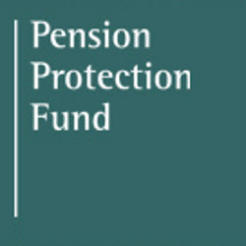A new way of calculating PPF levies for not-for-profit organisations is likely to save most charities money, says David Davison, but a few could be big losers.
Many charities running defined benefit pension schemes pay an annual levy to the Pension Protection Fund (PPF) and changes to how this levy is calculated are on the way. Established in 2005, the PPF was set up to provide a security net for pension scheme members when their employer becomes insolvent. The Fund does not receive any government support but is funded via an annual levy payable by all defined benefit (DB) schemes. The levy is calculated using a combination of scheme specific and risk based factors.
The PPF has made proposals about how the levy will be calculated over the next 3 years and the changes are likely to result in winners and losers. The PPF have changed their approach based upon significant experience acquired over the past 9 years. In addition there has been a move to a new insolvency risk provider, Experian, which has developed a model specifically for the PPF. The model reflects substantial differences between average UK businesses as a whole and the typical businesses which sponsor DB pension schemes.
The approach Experian are adopting is very different from Dun & Bradstreet who provided the scorecard previously, and is undoubtedly much more sophisticated. For the first time the PPF is intending to develop a separate scorecard for the NFP sector. For not for profit organisations, Experian will source data from the Charities Commission and Companies House.
Research has suggested that charities are four times less likely to become insolvent than corporates and initial estimates suggest that less than 30 per cent of charity employers will end up with a higher rating. However these outliers could see very significant levy increases if the funding position of their schemes has worsened.
The Pension Regulator has also recognised that charities are different and need to be assessed as such. For example the regulator’s new code of practice contains a new ‘sustainable’ growth objective however this needs to be clarified in relation to charities. We await their proposals.
The Charity Finance Group has sought clarity in a number of key areas:-
- Does the NFP definition employed in the scorecard accurately reflect the PPF’s understanding of what an NFP entity looks like in terms of its financial variables?
- Are there entities which have NFP status but are not covered by the scorecard, or vice versa?
- What impact will the move to FRS102 have on risk ratings?
- Does the levy treat multi-employer schemes within an appropriate risk framework?
- Given that the levy factors in investment risk, does the framework appropriately take account of charities’ own investment strategies, as informed by their covenant and appetite for risk?
In addition the scorecard needs to assess softer issues such as trustee experience, intangible assets and charity strategy.
Experian offer a free online portal which allows pension scheme trustees and their advisers to view sponsoring employer scores and the data held on them. This allows organisations to check their scores and have any errors in data amended. Initial signs are that the new process provides welcome transparency and there seems to be a great deal of engagement with the issues. Charities need to use the facilities available to assess their position and to feedback any changes as well as comment on any potential areas for improvement.









